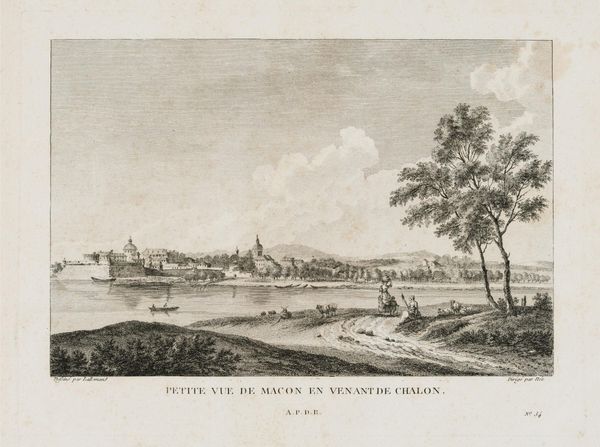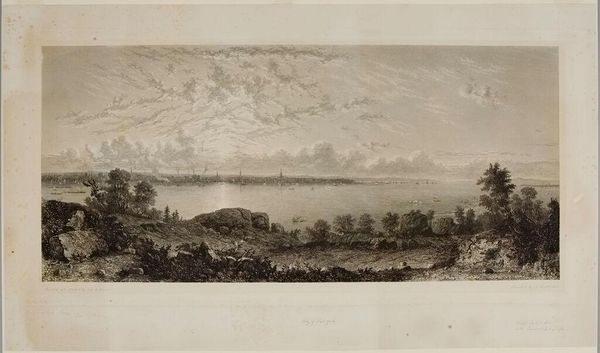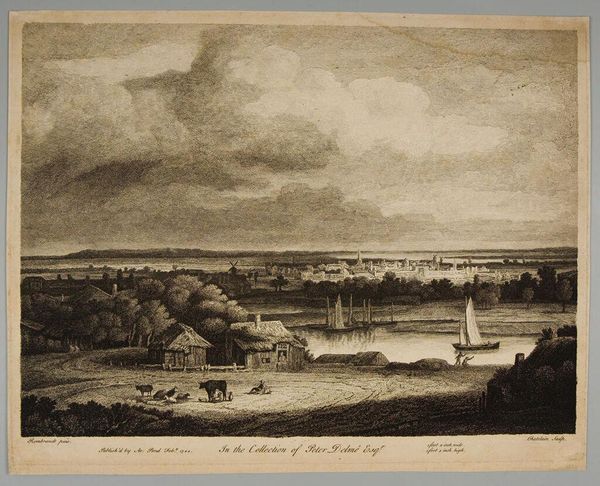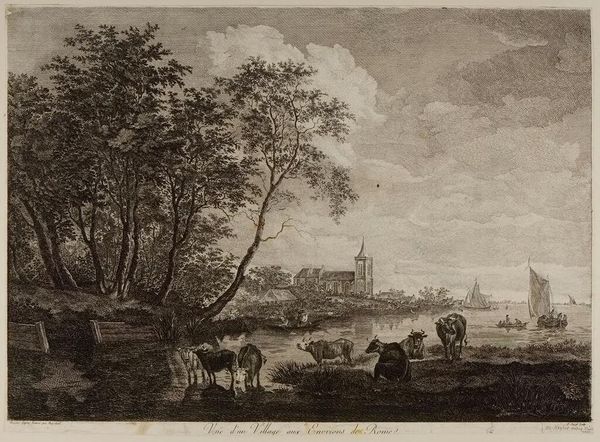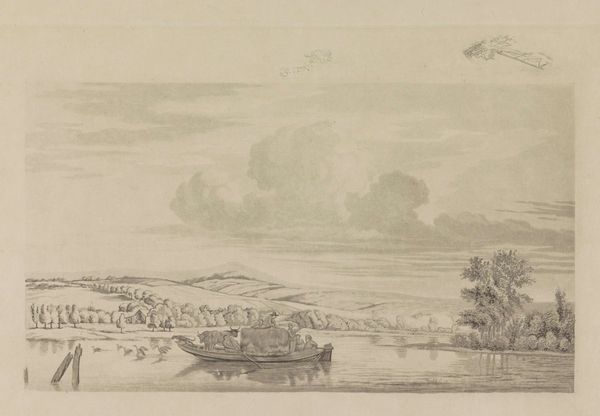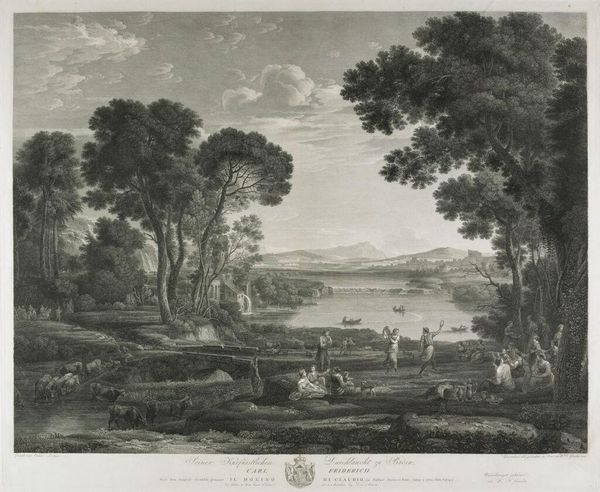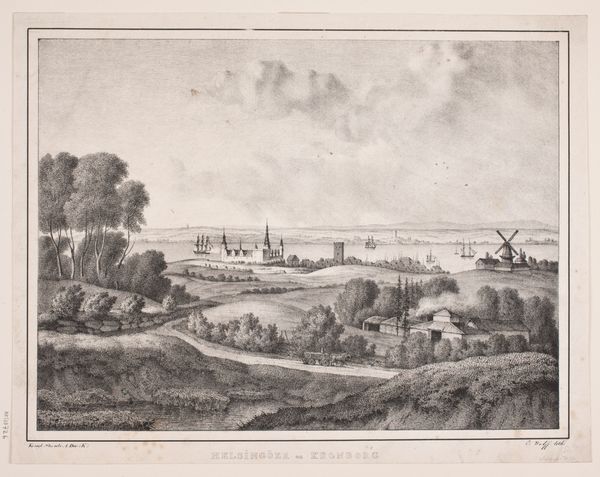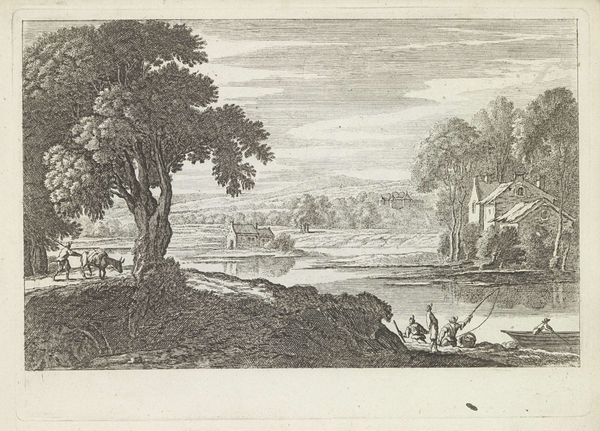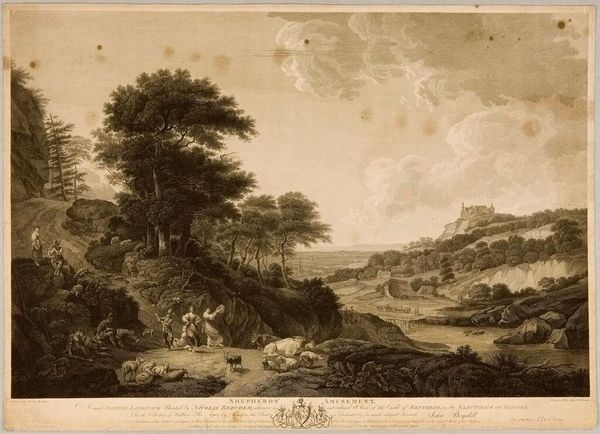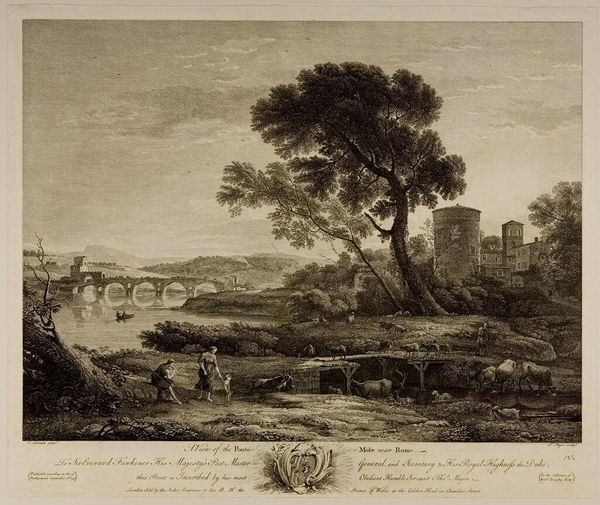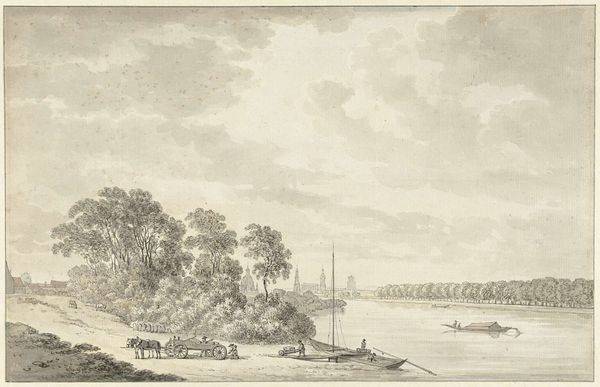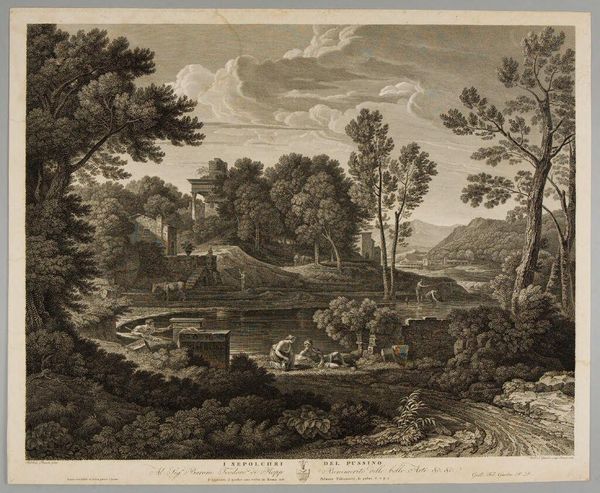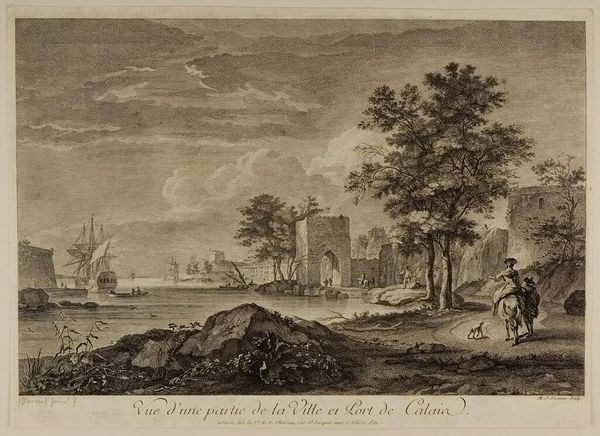
A South West View of the City of New York, in North America 1763 - 1773
0:00
0:00
drawing, print, etching
#
drawing
#
neoclassicism
# print
#
etching
#
landscape
#
cityscape
#
building
Dimensions: plate: 14 1/8 x 20 1/2 in. (35.9 x 52.1 cm) sheet: 17 11/16 x 24 3/16 in. (44.9 x 61.4 cm)
Copyright: Public Domain
Editor: So, here we have Pierre Charles Canot’s etching, "A South West View of the City of New York, in North America," created sometime between 1763 and 1773. It’s a cityscape, almost idyllic. What do you see in this piece, beyond just a pretty picture? Curator: I see a carefully constructed narrative, intentionally framing the colonial project. The scene, idyllic as it may appear, is inherently political. How do we interpret a seemingly peaceful landscape when we understand it was created during a time of immense social upheaval and displacement of indigenous populations? The very act of depicting and possessing the land visually is a form of asserting dominance. Editor: So, you’re saying it’s not just a neutral representation? Curator: Absolutely not. Consider the power dynamics at play. Who commissioned this work, and for what purpose? Was it to entice further investment and immigration, masking the realities of colonial violence? The composition itself – the prominent position given to the colonizers' structures, the way the land is ‘tamed’ – all speaks to an agenda. How does this image contribute to the larger narrative of colonization and its lasting impacts on Indigenous communities? Editor: I see your point. I was just appreciating the detail, but now I’m wondering about what’s *not* shown. Curator: Exactly! What’s omitted is often as significant as what’s included. By examining these omissions, we can begin to understand the historical and cultural biases embedded within the artwork, and the worldview it promotes. It's also worth examining the relationship between the idealized aesthetic and the underlying social and economic forces at play. Editor: This gives me a completely different lens for understanding these historical images. Thanks! Curator: And thanks to you; your engagement makes the conversation vital. By critically examining art like this, we can hopefully engage in decolonizing our perspectives on history.
Comments
No comments
Be the first to comment and join the conversation on the ultimate creative platform.
